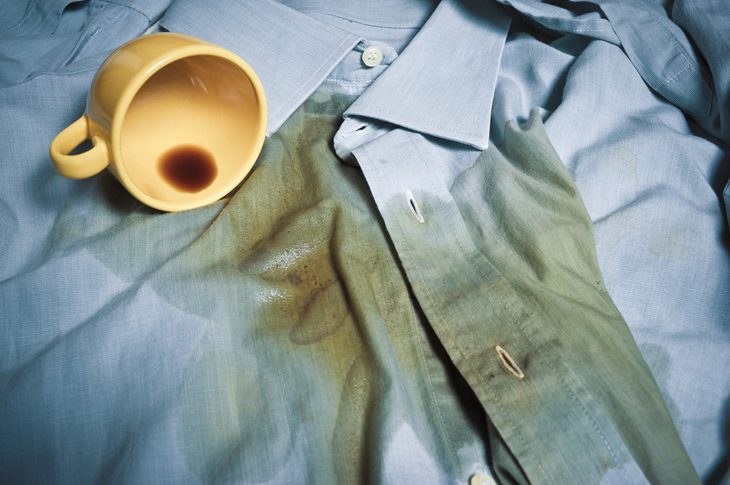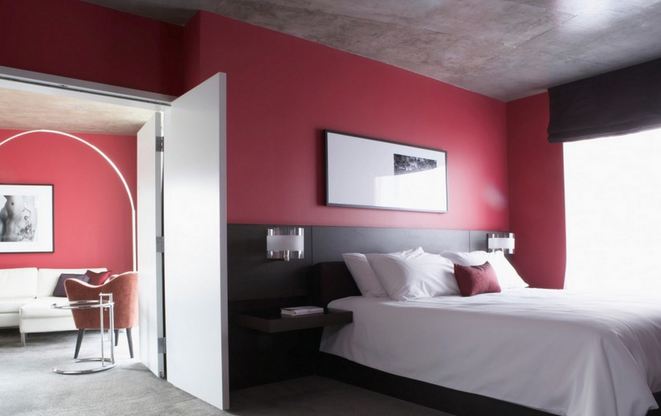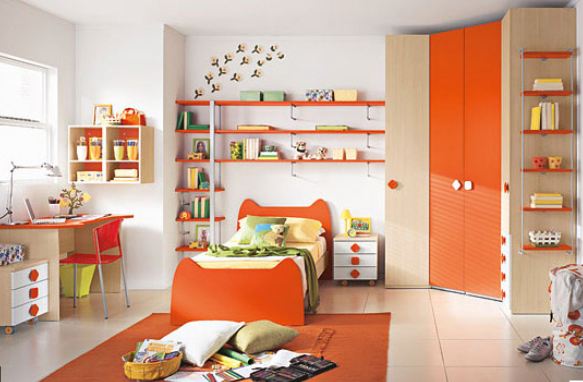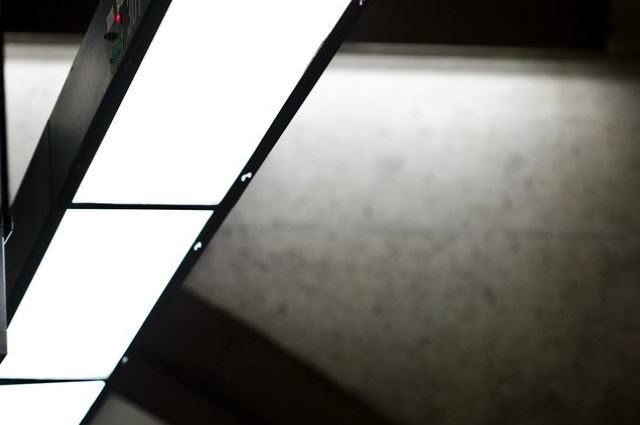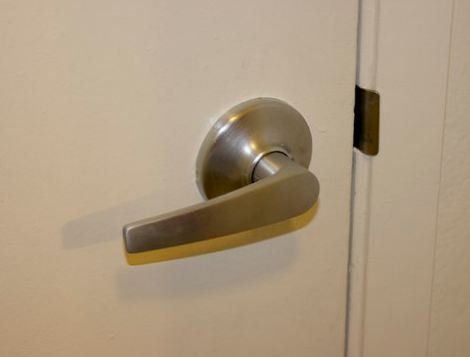What is the moisture infiltrated?
The moisture infiltrated is caused by the moisture that enters from the outside, that is to say with the use and wear of the structure of the house. Infiltrated moisture can also affect massive walls subject to heavy rainfall. Usually this type of moisture appears after a large load of water damaging the house a little everywhere. Mold will form where there is more moisture and it is not always easy to spot this problem early on.
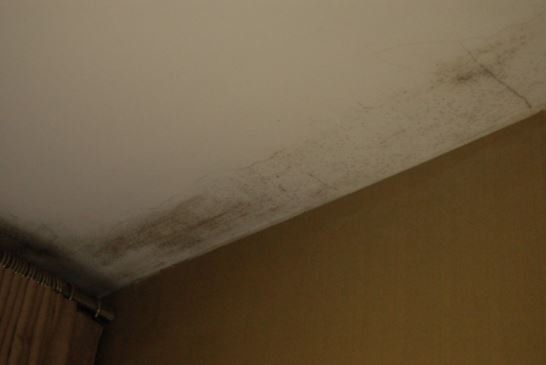
Causes of infiltrated moisture
• When there is moisture in the ceilings, it can be caused by broken and loose tiles or even a damaged ridge. Moisture on a ceiling that spreads over the chimney flange or through the roof window, at the junction of two sloping roofs, or in corners joining a single-story extension, is usually caused by the screen that has detached from the masonry or the fillets of mortar that are cracked or broken.
• Moisture in the walls near the ceiling is caused by faulty or clogged drippings or pipes filled with leaves. Check for cracked or porous bricks. If there are moisture spots insulated on the walls these are probably caused by the plaster being discarded and by cracks in the plaster (large damp spots) or retaining rods encrusted with mortar (small dots).
• When the wood is rotted and moisture spots around door and window frames are caused by gaps between the masonry and the frames and also by a lack of exterior planks or drips filled with paint and moss.
Moisture from the soil
Moisture from the soil is caused by water that is absorbed by soil and walls, and is usually confined to a range of 1 meter above ground level. It is a continuous problem, even when the weather is dry. In this case check the waterproof plate around the wall junction with the floor and floor covering. The older dwellings were usually built without waterproof plates, leading to moisture spreading. If existing materials are broken or structural movement is defective, there may be isolated moisture spots but with a tendency to spread wherever water infiltrates. If you have a waterproof plate below 150 mm from ground level, this will allow water to penetrate the wall, causing moisture spots at the level of the baseboard.
What is Condensation ?
The condensation exists when the heated humid air and reaches a cold surface. For example when a wall is exposed to winter icy winds or tiles, the result is condensation. Condensation occurs most often in bathrooms and kitchens, where water activities such as bathing and washing the kitchen are regular. To control condensation there must be a good balance between good ventilation and adequate heating. In modern homes, condensation is difficult to achieve because they are always hot and are very well insulated and caulked, with poor ventilation. The solution to avoid condensation is to get enough ventilation, but without allowing the warm environment of the house to come out.
How to distinguish moisture from condensation?
If you want to be sure that the moisture problem in your home is caused by condensation or moisture, place an aluminum foil over the stain, tape the ends, and wait for 48 hours. If it is condensation the moisture drops appear on the surface of the aluminum, if it is moisture infiltrated or rising from the ground the moisture drops appear on the bottom of the aluminum.
Consequences of moisture and condensation
Moisture and condensation can ruin the decor, damaging the floors, walls and plaster . The woods in turn rot. It is very important to deal with this problem urgently and to discover its causes. Moisture and condensation can have many origins: it can be caused by rain infiltrated by roof and walls, poor insulation of floors and floors, or a combination of these factors.
Solutions to eliminate moisture and condensation
When moisture and condensation arise, they should not be ignored in any way. Ignoring this type of problem does not make it disappear, otherwise doing nothing to stop it will have more serious consequences. Usually the solution is very simple and inexpensive. If the problem is not dealt with urgently, its effects may last for some time, and you will have more work when you want to treat, clean and repair everything again.
How to solve condensation?
In cooking activities the vapors of cooked food can be eliminated with the cooker hood. However in places where there is a large amount of steam, such as in bathrooms when taking a shower for example, the elimination of condensation is treated with the aid of an extractor. In order for the extractor to be fast and efficient, it must be installed properly and must have the appropriate size with the partition. For example in a kitchen, an extractor should change the air 15 times per hour, and in the bathrooms it should change the air six to eight times per hour, which should increase to 15 to 20 times an hour for a shower. To know the size and type of extractor to be applied in each case simply multiply the volume of the room by the number of times the air changes and look for an extractor that offers the same capacity of cubic meters per hour. The extractor should be installed on the wall at a good height and away from the main source of ventilation. Diagonally opposite the main door is ideal. The more spread condensation can be removed with the help of an electric dehumidifier. Condensation can also be avoided by a whole-house ventilation system controlled by a thermostat.
Some practical suggestions:
• To minimize the amount of steam formed in the bathroom, close the door during the bath and allow the cold water to run first.
• If there is condensation in a small space, such as in a cabinet built into the wall, resulting in mildew and mildew, use silica gel crystals that help absorb excess moisture from the air.
• In kitchens, make sure that the dryer is adequately ventilated.
Apply a waterproof silhar
The first thing to do to defend against moisture is to apply a waterproof board combined with a waterproofing membrane , backed by rainwater systems and plumbing. Good ventilation is the key to avoid condensation problems. Proper airflow during the construction of the house should be achieved by using openings in the soffit and perforated bricks, not to mention the application of extractors to let out the hot, moist air from the daily activities in the kitchen and bathroom.
Moisture problems
Once you know the cause of the infiltrated moisture and it is resolved, the problem disappears. However the solution to the problems of humidity coming from the soil, caused by the absence of impermeable plaque or a waterproofing membrane, is complex. You must make a replacement of this or if you can repair it. On the other hand, if the solution is in the application of an impermeable silhar this task becomes simpler. If the ground level is not appropriate, dig a 150 mm wide gap between a raised path and the house wall, then fill with gravel, allowing rain to drain faster. When there is debris in the cavity, or when a retaining rod is dirty, remove some bricks to get access to the stones or mortar. Replace the bricks and place a layer of liquid water repellent on the area.
The effects after treatment:
The walls and floors can take up to about a month for every 25 mm of thickness to dry. On the other hand the old plaster, when being contaminated enough with the mineral salts of the moisture that comes from the soil, can continue to absorb the humidity of the air. In this case replace the plaster, but wait until the walls are dry. Apply a fungicide to remove mold stains from interior surfaces caused by moisture or condensation.
Waterproof plates
There are several ways to install a waterproof board. These may vary from the installation of the normal waterproof slit cut to fit between the bricks to the installation of synthetic resins, which are introduced into the holes made in the wall. In this case to solve the problem of soil moisture the best thing to do is to consult a professional in the area as this is not a simple task to perform. This type of work is important and complex, so you should choose a professional company that offers an insurance guarantee.
How to install a waterproofing membrane?
This is a task that any one of us who is competent DIY enthusiast can do. For your installation you have to dig the floor tiles and then replace them. This is a hard and arduous task but it is one of the best methods to make the waterproofing of a concrete pavement. There is another waterproofing option that consists of applying several layers of a polyurethane varnish to the floor, but it is necessary that all leaks are completely covered with hydraulic cement. A third option put two layers of liquid rubber on the old surface, then cover it with cement and sand mortar, this will raise the floor level to about 50 mm. In both methods, the waterproofing membrane material should be placed so as to be attached to the impermeable plate, if any. When a problem of wet floors caused by rising water levels in the soil is very serious and affects the cellars, it is no longer easy to solve requiring a structural waterproofing. This type of work requires the hand of qualified professionals.

